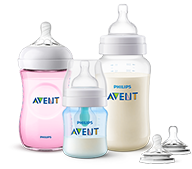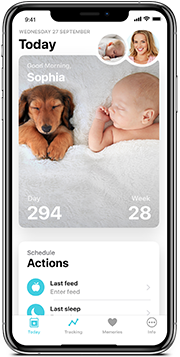Baby colic remedies
Colic will usually subside naturally within three months, but we know it can feel like longer when you’ve got a crying baby on your hands. So here are some things you can try to ease your baby’s discomfort in the meantime.
- Create a longer window between feeds. If you’re currently feeding every one to two hours, try out a routine of feeding every three to four hours and see if it makes a difference.
- Breastfeeding diet. If you’re dealing with colic in breastfed babies, check your diet to see if you’re eating a lot of the following foods: broccoli, cauliflower, sprouts, cabbage, chocolate, cow’s milk, onions, citrus fruits or tomatoes. These can all cause babies to be gassy or colicky. If you suspect a certain food, cut it out for a couple of days to see if there’s an effect.
Remember, if you are considering cutting out any food groups entirely for the long term, such as dairy, it’s a good idea to get advice from a healthcare professional.
- Burping technique. Try to get the gas out of your baby’s tummy before it has a chance to move through to the bowel. If your baby is a quick feeder you may need to burp more frequently. Hold your baby upright, either over your shoulder or sitting in your lap. Try firmly patting your baby’s back to encourage the bubbles up and out.
- Massage. A gentle tummy massage can help relax your baby’s tense muscles (and can be especially effective after a warm bath).
- Gripe water. Gripe water is an old-fashioned remedy. While there is no hard evidence that it works, some moms do use it when their baby has a problem. It warms and relaxes the tummy and is said to have an antacid effect too. Gripe water is usually recommended for babies older than one month, but always remember to check the label before use.
- A more comfortable position. Certain positions are soothing for a colicky baby, especially on the tummy. Lay your baby face down over your arm, head resting in the crook of your elbow, with your hand between your baby’s legs. You could also try lying your little one face down on your lap, head turned to the side, while gently moving your own legs side to side. Do make sure your baby is lying face-up once asleep.
- Movement. A swing or vibrating chair can be a lifesaver if your baby is very unhappy in the evenings.
- Anti-colic bottles. If you’re bottle feeding, either fully or just occasionally, choose a bottle with an anti-colic valve, which has been clinically proven to reduce colic and its symptoms. Be sure to have the correct flow for your baby, and to always have the teat full of milk so your baby isn’t sucking in air.
- Pacifiers. Try a pacifier when your baby is difficult to comfort. If your baby does have pain, suckling will help.
Colic can be unsettling for both baby and parent, but the main thing to remember is that you’re doing great. These tips are designed to help put your mind at rest and give you some options for soothing your baby, but please be aware that the information does not substitute professional medical advice.
Philips Avent cannot be held responsible for any damages that result from the use of the information provided on this website.














